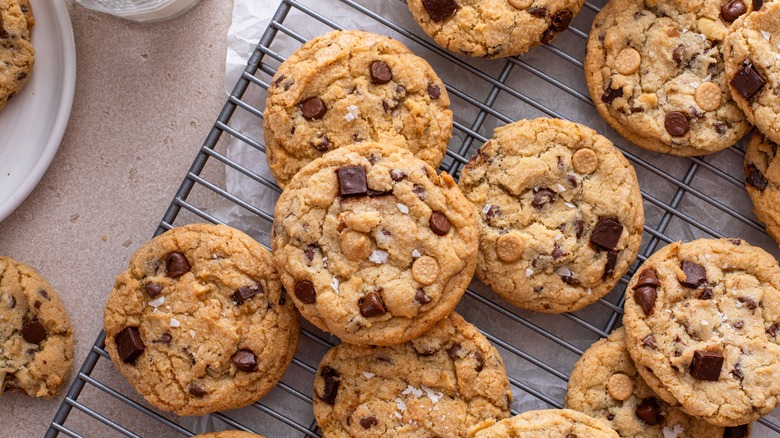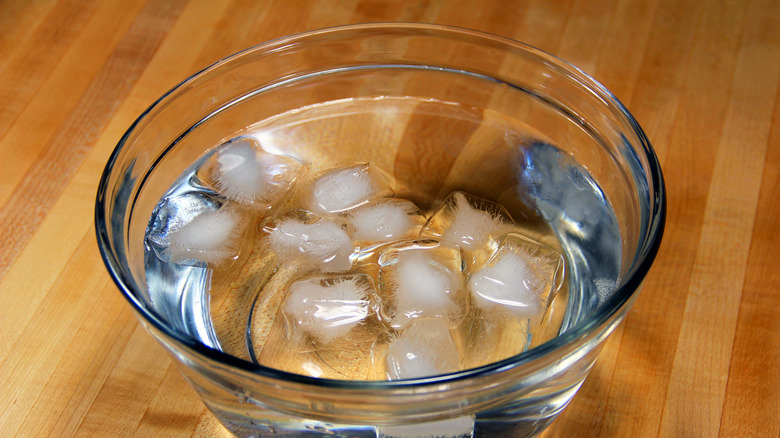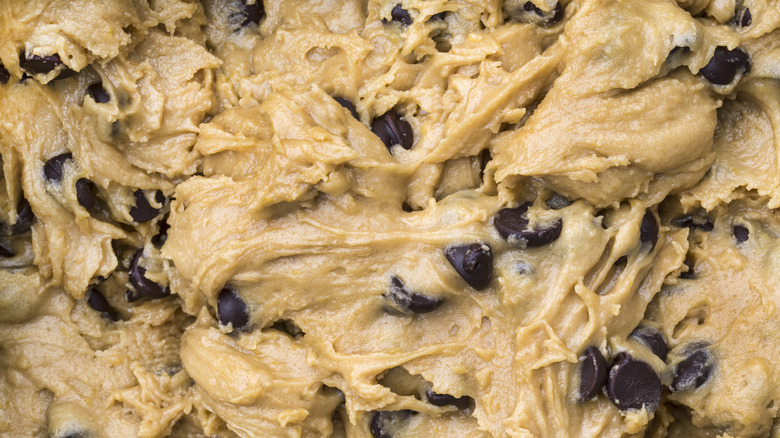The Fast Fix That'll Keep Your Cookies From Coming Out Flat
What's better than a warm, gooey cookie straight out of the oven? I know — a warm, gooey cookie that can be made in under 30 minutes! And yet, many cookie recipes call for the dough to be chilled overnight, which can be a real buzzkill, especially when you want that cookie now.
Despite this common annoyance, many chefs argue that chilling the dough isn't a step you can skip. Chilling the dough in the refrigerator for one hour (or up to overnight) ensures your cookies won't turn into a flat, spread-out mess on your baking sheet. But I have good news: You can speed up this crucial chilling process and still enjoy all the benefits of cold cookie dough. That's right: With one simple technique, you can bake cookies that are chewy, thick, and perfectly round without waiting for hours. Enter the ice bath — a quick hack that gets your dough to the ideal baking consistency in no time using science.
Why the ice bath works
For the ice bath method, place your prepared dough into a gallon-sized resealable plastic bag. Ensure the bag is airtight to prevent water from seeping in. Press the cookie dough in the bag into a thin, even layer, roughly half an inch thick. Prepare an ice water bath in a container large enough to accommodate the flattened dough (a large roasting pan can work if you lack a suitably sized bowl). The increased surface area of the dough in this flattened state allows for quicker chilling when submerged in the ice bath. Leave the dough in the cold water for about 20 minutes until thoroughly chilled and ready to bake.
Why does this work, you may wonder? Well, the secret is in the ice. This process mimics the fridge or freezer chilling process, speeding up the cooling and firming of the dough. We all know ice is colder than room-temperature water. Ice molecules move slowly and cluster tightly together, producing relatively little heat. This means the ice absorbs heat from whatever is nearest — in this case, your cookie dough.
What exactly is happening?
But what is actually happening during this process that creates the perfect cookie? Firstly, the most important thing that chilling prevents is spread. The cooling process firms up the fat in the cookies. This is crucial because the colder the fat, the longer it takes to melt and the less the cookie flattens out. Chilling also helps the sugar in the dough absorb liquid. This is another important factor that helps prevent the cookie from spreading.
Additionally, the gluten in the flour relaxes as the dough sits. This is key for any recipe that contains wheat flour. When mixing this type of dough, the gluten in the flour develops, which can lead to bready cookies. The chilling process helps minimize gluten development, allowing the dough to relax. The result? A soft and delicious cookie.
So while it may seem like an unnecessary step, chilling your cookie dough in an ice bath ensures your cookies bake up just right — chewy, beautifully-shaped, and deliciously satisfying. Next time you're ready to bake, don't skip the chill; instead, speed it up with an ice bath.


